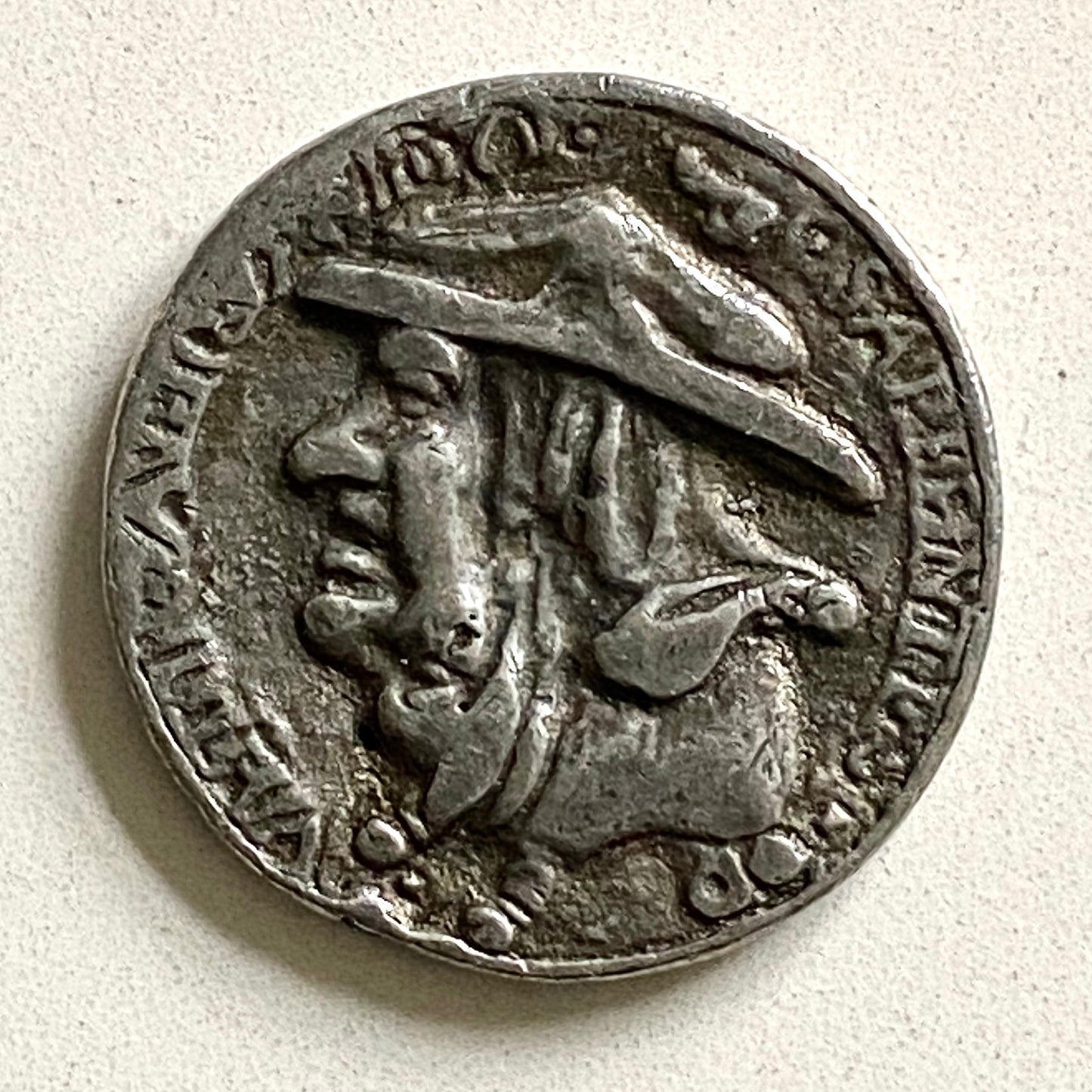Specs Fine Books
1550 REFORMATION. Important Satirical Medal Comparing Priests & the Pope to Fools & the Devil!
1550 REFORMATION. Important Satirical Medal Comparing Priests & the Pope to Fools & the Devil!
Couldn't load pickup availability
An important pro-Reformation piece of tangible theology distributed throughout Germany, Switzerland, Holland, and Spain during the 16th century.
Measuring 1.5 inches in diameter appx, likely issued in Germany or Holland, c.1550.
One on side is the head of the pope with the hidden head of the devil; on the reverese is the head of a cardinal with the hidden head of a court jester or fool. Surrounded by a satirical latin saying essentially arguing that foolish children become priests and the chief priest, the Pope, is himself the Devil.
See a simillar example in the Weiss collection, British Museum, etc.,
With the Protestant Reformation beginning in 1517 when Martin Luther nailed his Ninety-Five Theses to the door of the All Saints' Church in Wittenberg, Germany, came a propoganda war between the Catholic church and the followers of Luther; it included satirical woodcuts, pamphlets, paintings, plays, and coins.
The medal shown here is one of several issued during this period to support the Protestant movement by ridiculing the hierarchy of the Roman Catholic Church. This satirical medal, when rotated at 180 degrees changes the pope, now portraying him as the devil; the figure of the cardinal, on the reverse, when rotated is converted into a jester or fool.
The Latin inscription on the obverse can be translated in various ways, but generally suggests that if the parent (Pope) is evil, the children (his followers) are evil and foolish for following him.
Barnard notes that the first medals depicting the pope and cardinal were positive images issued during the Reformation by the Roman Catholics in which the rotated images showed another view of each figure in different garb. Later the Protestants of Germany, Holland and Switzerland issued similar satirical medals, but now scurrilous, as the rotated images depicted the Pope as a Devil and the Cardinal as a Fool. Barnard goes on to note: "Many of these medals have been pierced, or provided with loops, for suspension, to facilitate wearing by enthusiasts of either party. Human nature, too, being what it is, we may conjecture that it was sometimes found useful to carry about a pair of rival badges. Displayed by Catholics in a Protestant district, or vice versa, they would probably save the wearer much trouble".
Click here to see the British Museum Example: https://www.britishmuseum.org/collection/object/C_1987-0649-662
Share








